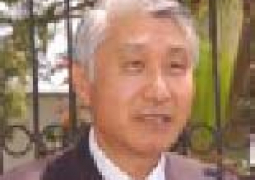A three-day sensitisation seminar on effective reporting on Female Genital Mutilation (FGM) for 30 journalists drawn from the print and electronic media yesterday kicked-off at the Baobab Holiday Resort in Bijilo.
The programme, organised by the Association of Health Journalists with funding from the UNFPA, seeks to build the awareness and sensitivities of media practitioners and media houses not only on effective reporting on a topic that has been subjected to unprecedented debates and propaganda overtime, but to also help journalists, including senior editors to develop objective analysis of issues regarding the practice of FGM in the best interest of Gambian women and girl children.
FGM, widely seen by many as a health hazard, is said to be one of the main reasons for the high rate of maternal mortality and infant death in many African countries, coupled with other practices, such as early marriage.
According to the World Health Organisation, an estimated 100 to 140million girls and women worldwide are currently living with the consequences of FGM. In The Gambia, according to experts, despite the downward trend the prevalence of FGM remains on the high side with 78.3% for women aged 15 - 49.
Delivering her keynote address, Dr. Isatou Touray, the Executive Director of the Gambia Committtee on Traditional Practices Affecting the Health of Women and Girls (Gamcotrap) highlighted the effects of FGM on the lives of women, noting that they continued to face the consequences of the practice in numerous ways.
"Complications such as anaemia as a result of the practice, due mainly to profuse loss of blood, lead many children to their death, while many are exposed to infections as a result of FGM. It is important to recognise that many women still live with the effects of FGM; a practice they had undergone since childhood. They suffer in silence thinking that it is their religion that ordains it," Dr Touray said.
According to her, in a recently concluded programme conducted by Gamcotrap in the Central River Region, a Health Officer from one of the health centres noted that 95% of the referrals to Kuntaur Health Centre for women in child birth are as a result of the complications of FGM. She stated that the consequences are a great concern for the women of The Gambia and the indicators on women’s health will remain appalling, if such a practice continues to find space within our society.
The factors leading to the practice, Dr. Touray added, are cultural but Gamcotrap remains concerned with the religious debate that promotes the practice. This, she noted, is highly unprogressive given the danger that women and girl-children are exposed to.
For his part, Pa Modou Faal, the President of the Association of Health Journalists underscored the timeliness of the sensitisation, describing it as another milestone as far as the media is concerned. This, he noted, will raise the awareness of journalists, whom he added, play a vital role as far as information dissemination on Female Genital Mutilation is concerned.
While commending the UNFPA for funding the sensitisation, Faal underscored the need for journalists to understand the culture of people at the grassroots level when reporting on FGM issues.
Mrs. Linda Osarensen from the Inter Africa Committee on Traditional Practices, who doubles as a consultant on FGM gave an overview of the FGM situation in



